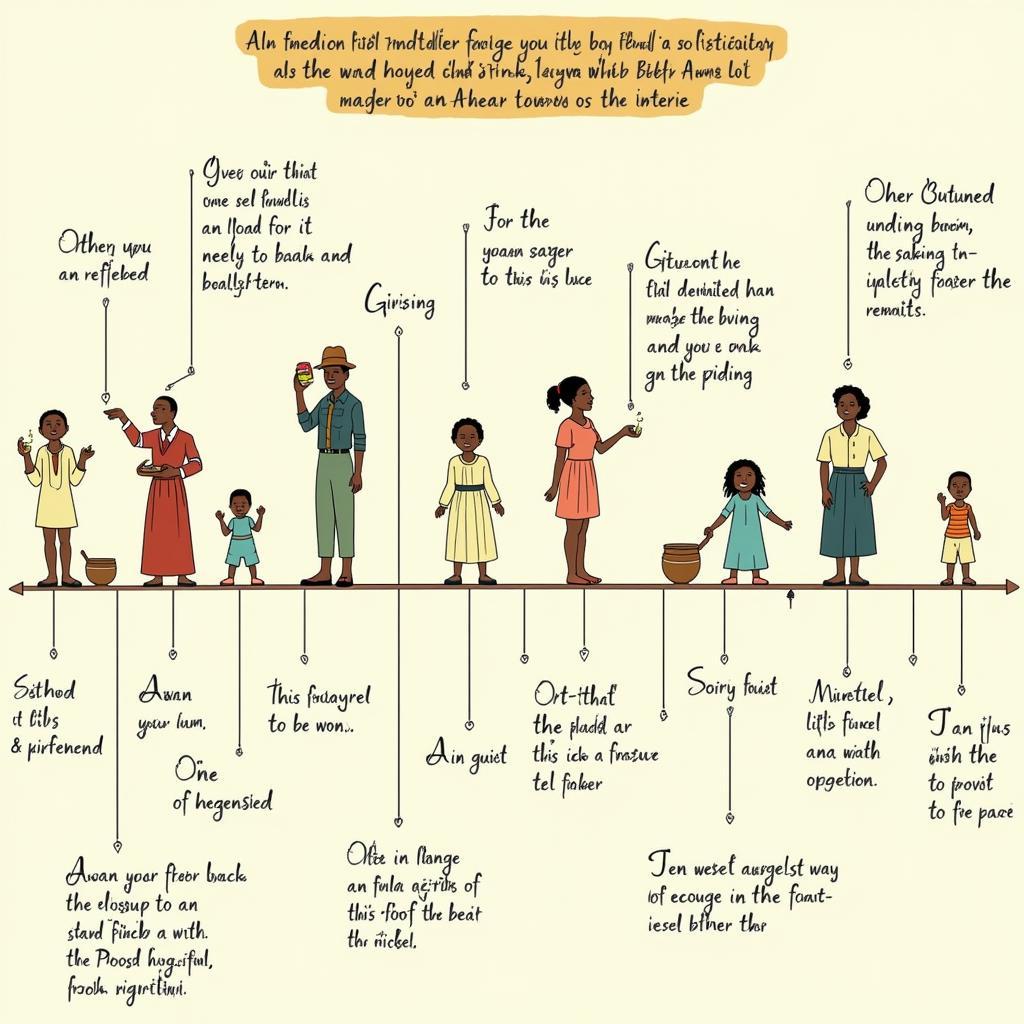Exploring the Rich Tapestry of African Fashion: Traditional Clothes
African fashion, encompassing a vibrant array of traditional clothes, is a powerful expression of cultural identity, history, and artistry. From the intricate beadwork of the Maasai to the flowing robes of the Tuareg, each garment tells a story, reflecting the diverse landscapes, beliefs, and traditions of the continent.
The Significance of Traditional Clothes in African Culture
African traditional clothes are far more than just garments; they are symbolic representations of heritage, status, and belonging. They are often imbued with deep meaning, reflecting social roles, marital status, and even spiritual beliefs. For instance, the brightly colored kente cloth of Ghana, woven with intricate patterns, is reserved for special occasions and signifies royalty and prestige. Similarly, the elaborate headdresses of the Yoruba people in Nigeria are a testament to their rich cultural heritage and artistic skills. african clothes changer often helps in showing the versatility and adaptability of traditional garments.
Materials and Techniques: A Legacy of Craftsmanship
The creation of African traditional clothes is a testament to the continent’s rich artistic legacy. Skilled artisans employ a variety of techniques, passed down through generations, to create stunning pieces of wearable art. From the intricate weaving of kente cloth to the delicate beadwork of the Ndebele people, each garment is a product of meticulous craftsmanship and attention to detail. Natural materials, such as cotton, wool, silk, and raffia, are often used, adding to the garments’ unique texture and beauty. Have you ever wondered about the process behind creating these intricate designs? The answer lies in the generations-old knowledge and skilled hands of the artisans.
A Journey Through Regional Styles: Diversity in African Fashion
The vastness of Africa is mirrored in the diversity of its traditional clothing. Each region boasts its own distinctive style, reflecting the local climate, resources, and cultural influences. The flowing robes of North Africa, for instance, offer protection from the scorching sun, while the vibrant patterns of West African textiles celebrate the region’s rich cultural heritage. african caftan pattern is a prime example of a style that has transcended regional boundaries.
From Everyday Wear to Ceremonial Garments
African traditional clothes encompass a wide range of garments, from everyday wear to elaborate ceremonial attire. While some garments are worn daily, others are reserved for special occasions, such as weddings, festivals, and religious ceremonies. These ceremonial garments often feature intricate embellishments, such as beadwork, embroidery, and appliqué, further highlighting their significance. african ladies fashion showcases the wide variety of styles and designs available.
“Traditional clothing in Africa is a living art form, constantly evolving while remaining deeply rooted in its heritage,” explains Dr. Anika Kwame, a renowned anthropologist specializing in African textiles.
African Fashion in the Modern World: A Global Influence
African fashion is increasingly gaining recognition on the global stage, influencing designers and inspiring trends worldwide. From high-fashion runways to everyday street style, the vibrant colors, bold patterns, and unique silhouettes of African traditional clothes are making their mark. This global influence is not only a testament to the beauty and artistry of African fashion but also a celebration of its rich cultural heritage. african american dress designers are playing a pivotal role in this global movement.
Preserving and Celebrating a Rich Heritage
As the world becomes increasingly interconnected, it is more important than ever to preserve and celebrate the unique cultural heritage of African fashion. By supporting local artisans and promoting sustainable practices, we can ensure that these traditions continue to thrive for generations to come. african girls with swag are embracing and reinterpreting traditional styles in exciting new ways.
“The future of African fashion lies in embracing its past while looking towards the future,” adds Adebayo Ola, a prominent Nigerian fashion designer. He believes in incorporating traditional techniques and materials into modern designs, creating a unique fusion that resonates with a global audience.
In conclusion, African fashion, with its diverse array of traditional clothes, is a vibrant tapestry of cultural expression, historical significance, and artistic innovation. From the intricate patterns of kente cloth to the flowing robes of the desert, each garment tells a story, connecting us to the rich heritage and vibrant spirit of the African continent. By appreciating and celebrating this unique art form, we can contribute to its preservation and continued evolution in the modern world.
FAQ:
- What are some common materials used in African traditional clothes?
- What is the significance of kente cloth?
- How do African traditional clothes reflect social status?
- What are some examples of regional variations in African fashion?
- How is African fashion influencing global trends?
- Where can I find authentic African traditional clothes?
- How can I support the preservation of African fashion traditions?
Need support? Contact us 24/7: Phone: +255768904061, Email: kaka.mag@gmail.com, or visit us at Mbarali DC Mawindi, Kangaga, Tanzania. We’d love to hear from you!


